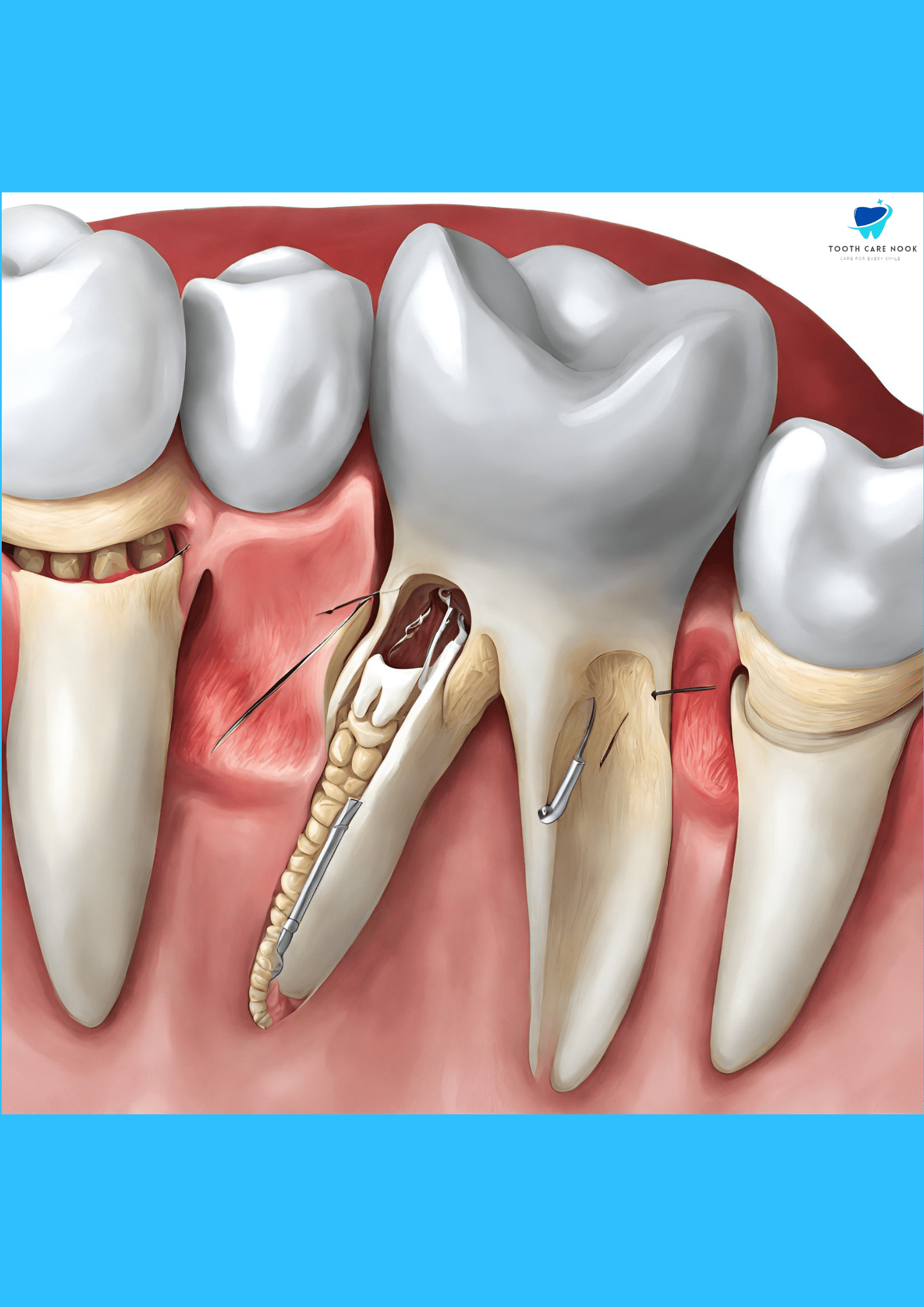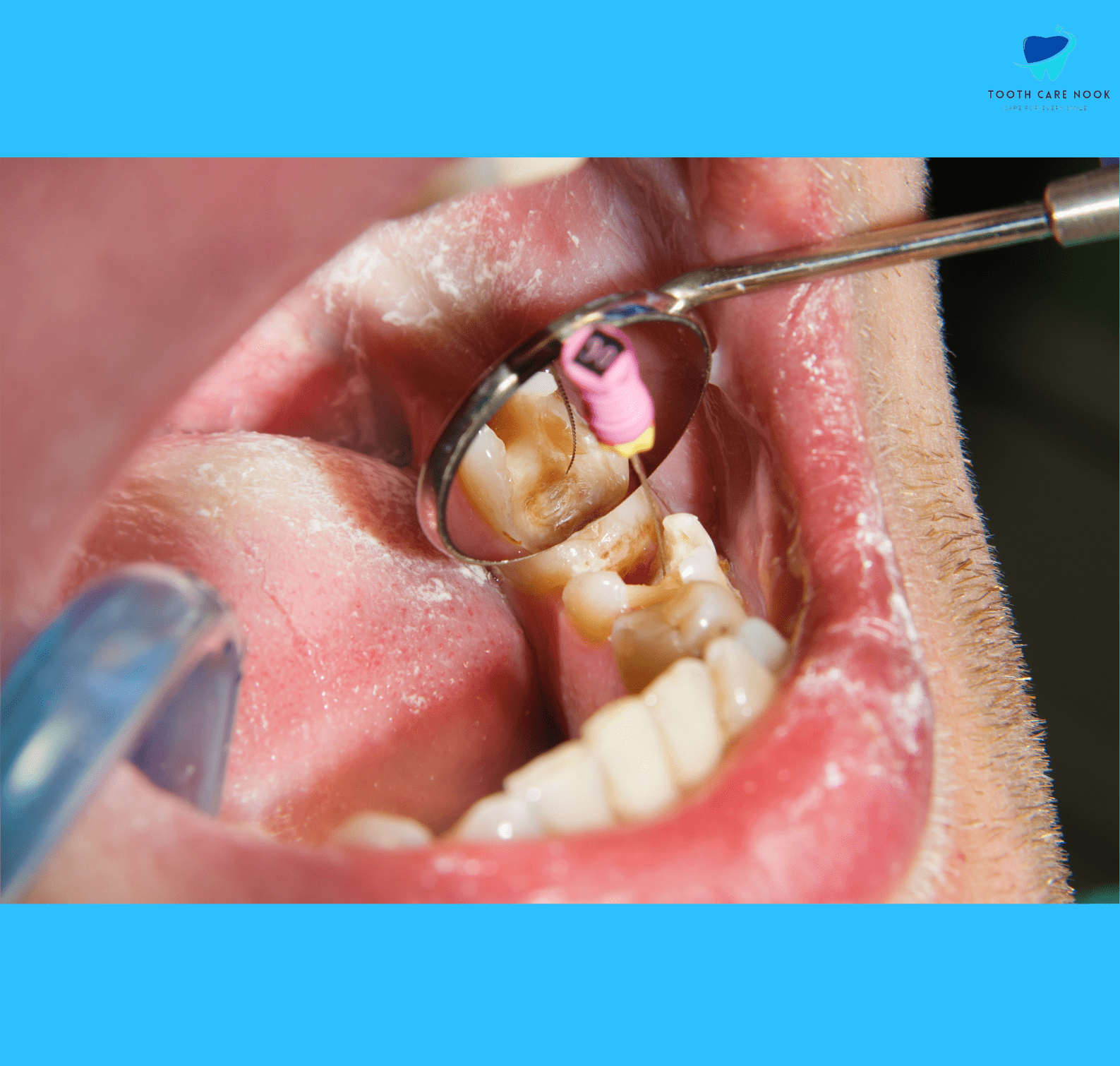A dental apicoectomy is a surgery to remove the tip of a tooth’s root and infected tissue. It treats persistent infections by removing inflamed gum tissue while leaving the top of the tooth intact.

Why it is Done?
An apicoectomy is done basically to successfully treat the infections, cysts, or irritation related to the root tip of a tooth while saving the regular tooth structure and staying away from extraction whenever the situation allows. When the root canal treatment is not sufficient to determine the hidden issue, typically apicoectomy is suggested.
What is the Dental Apicoectomy Procedure?
A dental apicoectomy is commonly performed under local anesthesia on an outpatient basis and in resolving root-end pathology it has a high achievement rate.
Here is the step-by-step dental apicoectomy procedure:
- The dentist will take your clinical history and may take X-rays to evaluate the extent of the contamination or infection around the root tip before the procedure.
- In the next step, the dentist will make a little cut in the gum tissue close to the impacted tooth to get to the root tip. At times, a little fold of gum tissue might be tenderly lifted to expose the fundamental bone and root tip.
- The dentist will carefully eliminate the contaminated or infected tissue at the tip of the tooth root with the help of some particular instruments. This might include eliminating a little piece of the root tip to guarantee total removal of the infected tissue.
- After the removal of the infected tissue, the dentist will then use a dental drill or ultrasonic instrument to reshape the root tip and set it up for fixing. This might include making a little cavity or score toward the finish of the root to work with legitimate fixing.
- A biocompatible material, for example, MTA (mineral trioxide aggregate) or dental filling material, is put to seal the root end and keep microorganisms from reemerging the tooth once the root tip is reshaped.
- After that, the gum tissue is repositioned and sutured once again into the right spot. The sutures assist with holding on the gum tissue in footing as it mends.
- Lastly, your dentist will give guidelines on how to take care of the best way to focus on the surgical site and deal with any swelling, discomfort distress, or enlarging. He might be prescribed antibiotics or anti-infection agents to help you overcome the pain and forestall infection.
Possible Complications of Apicoectomy
Swelling and Discomfort:
Some level of discomfort, swelling, and uneasiness is normal after a medical procedure. In any case, extreme pain or swelling might demonstrate complexities like contamination or infection.
Nerve Damage:
The nearness of dental nerves to the careful site represents nerve damage during the methodology. Nerve damage might bring numbness temporarily or permanent, or modified sensation in the impacted region.
Infection:
Regardless of the procedure’s objective of removing infection, there is a risk of postoperative infection. This can happen during the healing process assuming bacteria are once again introduced into the surgical site.
Sinus Complications:
Apicoectomy including the upper back teeth (maxillary molars) conveys a risk of inconveniences connected with the vicinity of the sinus cavity. These difficulties might incorporate perforated sinus or postoperative sinus blockage.
Incomplete Healing:
Sometimes, healing of the surgical site may not happen as expected, it may lead to delayed healing, tireless infection, or different complexities.
Root Fracture:

There is also a risk of breaking the tooth root or encompassing bone, during the removal of the root tip. This chance is higher in teeth with complex root anatomy.
Signs of a Failed Apicoectomy
The signs of a failed apicoectomy include:
- persistent or continuous pain.
- Redness or swelling.
- Loosening of the tooth.
- Drainage or pus.
If you face any of these experiences, it is important to contact or visit your dentist immediately for further assessment and prevention.
Apicoectomy Success Rate
The success rate of an apicoectomy is normally high, it is going from 85% to 95% in appropriately selected cases. With more advancement in dental procedures, the success rate was seen above average almost every time.
Apicoectomy Side Effects
Some of the side effects of apicoectomy include.
- Delayed healing.
- Nerve Damage
- Bleeding.
- Pain and Discomfort.
- Swelling and Bruising.
- Infection.
Is Apicoectomy Painful

During the apicoectomy process, patients normally don’t feel because the area is numbed. However, after completion of the process, patients might encounter some pain to direct agony or uneasiness in the treated area. This pain is normal and can be managed with prescriptions as recommended by the dentist.
« Back to Glossary Index